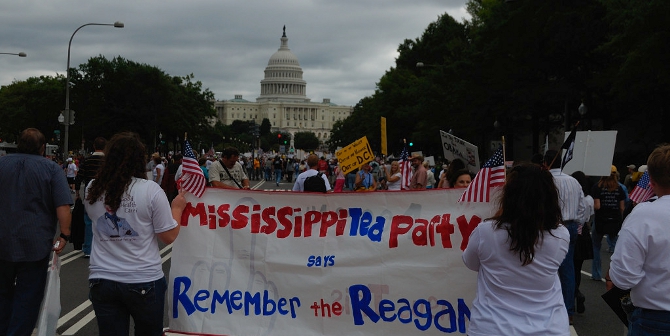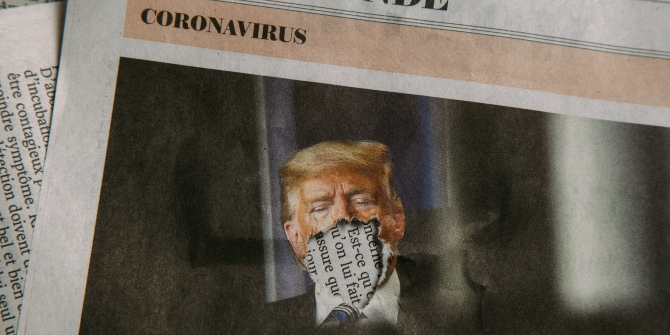 On the evening of Saturday July 13 2024, there was an attempt to assassinate Donald Trump at a campaign rally in Pennsylvania. Peter Finn documents the Official Record that future historians will use to piece together events.
On the evening of Saturday July 13 2024, there was an attempt to assassinate Donald Trump at a campaign rally in Pennsylvania. Peter Finn documents the Official Record that future historians will use to piece together events.
- This article is part of ‘The 2024 Elections’ series curated by Peter Finn (Kingston University). Ahead of the 2024 election, this series is exploring US elections at the state and national level. If you are interested in contributing to the series, contact Peter Finn (p.finn@kingston.ac.uk).
In Butler, Pennsylvania, on Saturday July 13, shots were fired at a campaign rally where former, and potentially future, US President Donald Trump was speaking. One person was killed, and another seriously injured. Trump was struck, but did not receive serious injuries, and was quickly bundled off stage by Secret Service agents. The Federal Bureau of Investigation quickly identified Thomas Matthew Crooks of Bethel Park, Pennsylvania, who was shot dead at the scene, as a suspect. When future historians come to explore this assassination attempt, a key source for doing so will be the US Official Record. But what do we mean when we talk about the ‘Official Record’? How will this record develop in the short, medium and longer term, and how will it be informed and influenced by congressional investigations?
The Official Record
As I explore in a recent co-edited book, The Official Record: Oversight, national security and democracy, states document a version of what they do in their Official Record. Broadly defined as the sum total of material created as a result of the operations of a state; this is as true for the US as it is for other nations. Yet rather than a dry ledger, this record, which can be found in a multiplicity of ways at federal, state and local levels, is diverse. For the US, the Official Record can include everything from statements made by federal and state agencies, policy reports and other documents, the Congressional Record and Federal Register and many other sources. As more and more elements of government business move online, the Official Record is growing in complexity all the time.
Short-term
Since the assassination attempt, a plethora of documents from elements of federal, state and local levels of US government have been created, with many (though certainly, one presumes, not all) already in the public domain. Some interesting examples that have already contributed to the first draft of history generated by the media include; a statement from the Federal Bureau of Investigation (FBI) that, as of the time of writing, contains an initial write-up from the day of the attack and an update from the following day: a statement on the assassination given by the Governor of Pennsylvania Josh Shapiro: and Butler Township Manager Tom Knights criticising ‘a barrage of hate mail and angry phone calls blaming its officers for failing to keep the former president safe’, stating criticisms “couldn’t be more wrong” and they had “acted instinctively, did their job, followed the training that they had”.

DHS Secretary Alejandro Mayorkas Delivers Remarks at White House Press Briefing by U.S. Department of Homeland Security (DHS) is United States government work.
As the event recedes in time, we can expect the number of sources to grow, and, in turn aspects of the material generated in the immediate aftermath will become embedded into, influence, and analysed within, other aspects of the Official Record in the medium and longer term.
Medium to longer term
In the coming months, and as a more nuanced understanding of events emerges, official investigations will take place. These will draw in significant resources: for example, Attorney General Merrick Garland stated the day after the assassination attempt that he had directed ‘FBI, the ATF [Bureau of Alcohol, Tobacco, Firearms and Explosives], the US Attorney’s Office for the Western District of Pennsylvania, and the Department’s National Security Division to bring every available resource to bear on this investigation’.
Given the gravity of an assassination attempt against a former, and potentially future, president, along with the involvement of many federal and state organisations, the material this investigation, along with the differing strands of investigation that will inevitably develop within it, will generate within the US Official Record will be voluminous. Some of this material will be put in the public domain as the investigation evolves, or shortly after it concludes. However, other aspects of this material may remain classified, and thus absent from the public domain, for decades. Potentially, some material may never become public.
Congressional investigations
Looking further forward, there will clearly be significant material generated within, or connected to, investigations and inquiries emanating from the US House of Representatives and the US Senate. Chairman of the House Committee on Homeland Security, Republican Mark Green of Tennessee, for instance, sent a letter to Homeland Security Secretary, Alejandro Mayorkas, asking for, among other things, ‘[d]ocuments sufficient to show the security plan to secure the perimeter of’ the site of the rally in Butler and ‘[a]ll documents and communications […] referring or relating to any potential increase or addition of protective resources to President Trump’s security detail’. In a similar vein, on July 22, the Director of the Secret Service, Kimberly Cheatle, will testify in front of the House Committee on Oversight and Accountability.
In the Senate, meanwhile, the Co-Chairs of the Senate Committee on Homeland Security & Governmental Affairs have announced ‘a bipartisan investigation and plan to hold a hearing to examine security failures that led to the attempted assassination of Former President Donald Trump’. The signature contributions to the Official Record of these legislative investigations may well be reports, but they will also generate a much wider set of material that historians will be able to draw from to piece together the assassination attempt itself, along with the politics of the investigations that are following it.
- Featured image: WASHINGTON (July 15, 2024) DHS Secretary Alejandro Mayorkas delivers remarks at the White House Press Briefing following the attempted assassination of former President Donald Trump in Washington D.C. DHS Secretary Alejandro Mayorkas Delivers Remarks at White House Press Briefing by U.S. Department of Homeland Security (DHS) is United States government work
- Please read our comments policy before commenting.
- Note: This article gives the views of the author, and not the position of USAPP – American Politics and Policy, nor the London School of Economics.
- Shortened URL for this post: https://wp.me/p3I2YF-e6q






